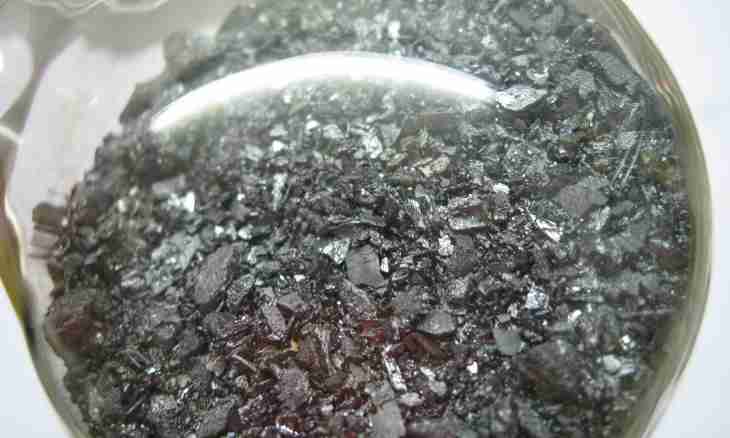Titanium is chemical element IV of group of periodic Mendeleev's system, it treats light metals. Natural titanium is presented by mix of five stable isotopes, also several artificial is known radioactive.
Instruction
1. Titanium is considered widespread chemical element, its content in earth crust is about 0.57% on weight. Among constructional metals from takes the fourth place on prevalence, I concede to aluminum, iron and magnesium. In a free look this metal does not meet. Most of all titan contains in the main breeds of a basalt cover, least of all — in the ultramain breeds.
2. Among the rocks enriched with the titan syenites and pegmatites are most known. There are more than 100 minerals of the titan, generally magmatic origin, the most important of them: rutile and its more rare crystal modifications - anatase and brookite, sphene, titanomagnetit, a perovskite and ilmenite. In the biosphere the titan is absent-minded, this chemical element is considered poorly migrating.
3. The titan exists in two allotropic modifications: below 882 °C its form with a hexagonal plotnoupakovanny lattice is steady, is higher than this temperature — from body-centered cubic.
4. Technical titanium which is used in the industry contains the impurity of nitrogen, oxygen, iron, carbon and silicon reducing its plasticity and increasing durability.
5. Pure titanium — chemically active transitional element, in connections it has the oxidation level +4, is more rare than +2 and +3. Because of existence on the surface of metal of a thin and strong oxidic film it is corrosion resistant at a temperature up to 500-550 °C, this metal begins to interact with air oxygen considerably at a temperature above 600 °C.
6. In the course of mechanical work, thin titanic shaving can flare up if in the environment sufficient oxygen concentration, and the oxide film is damaged by blow or friction. Fire of the titan is possible at the room temperature even in rather large pieces.
7. Melting and welding of the titan are carried out in a vacuum or in the atmosphere of neutral gas as in liquid state the oxide film does not protect metal from interaction with oxygen. The titan is capable to absorb hydrogen and atmospheric gases, at the same time fragile alloys which are not suitable for practical use are formed.
8. Titanium is resistant to influence of nitric acid in any concentration, except for red smoking, it causes metal cracking, and this reaction can proceed with explosion. With the titan the following acids react: salt, concentrated sulfuric, fluoric, oxalic, trichloroacetic and ant.
9. Technical titanium is applied to production of tanks, pipelines, pumps, fittings and other products which constantly are in hostile environment. Cover with it the details made of steel, use for production of the equipment of the food industry and also in recovery surgery.
